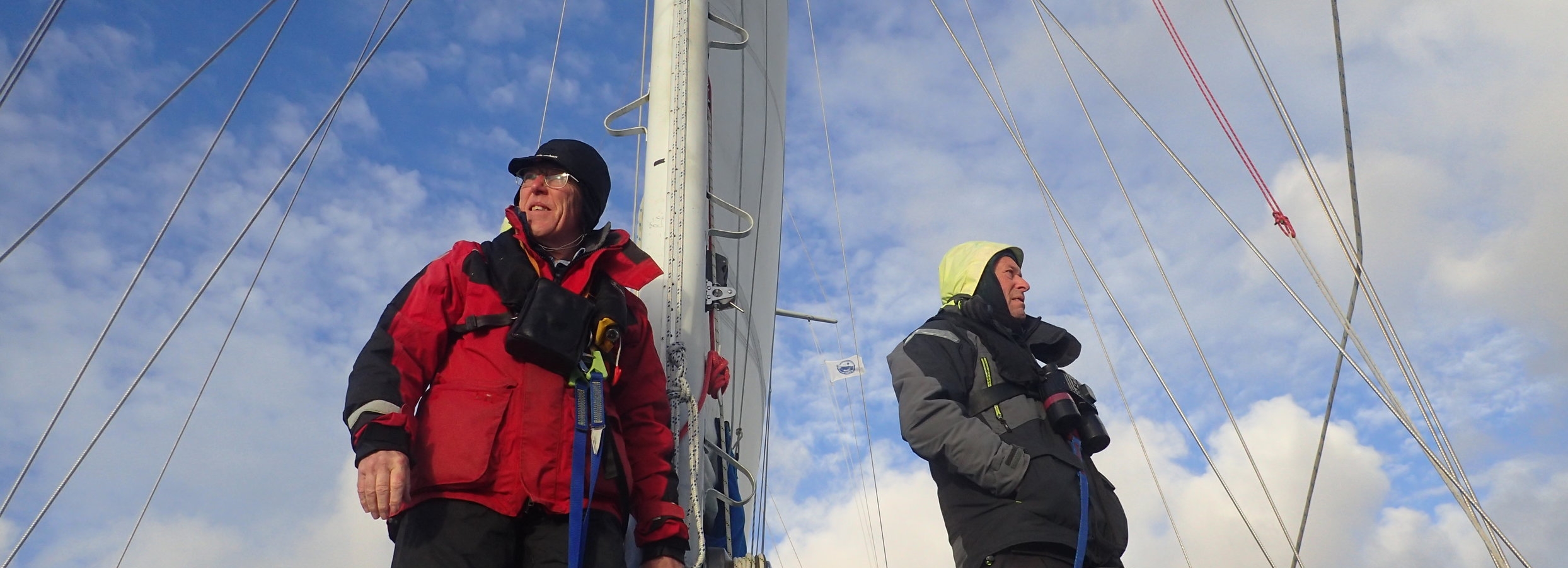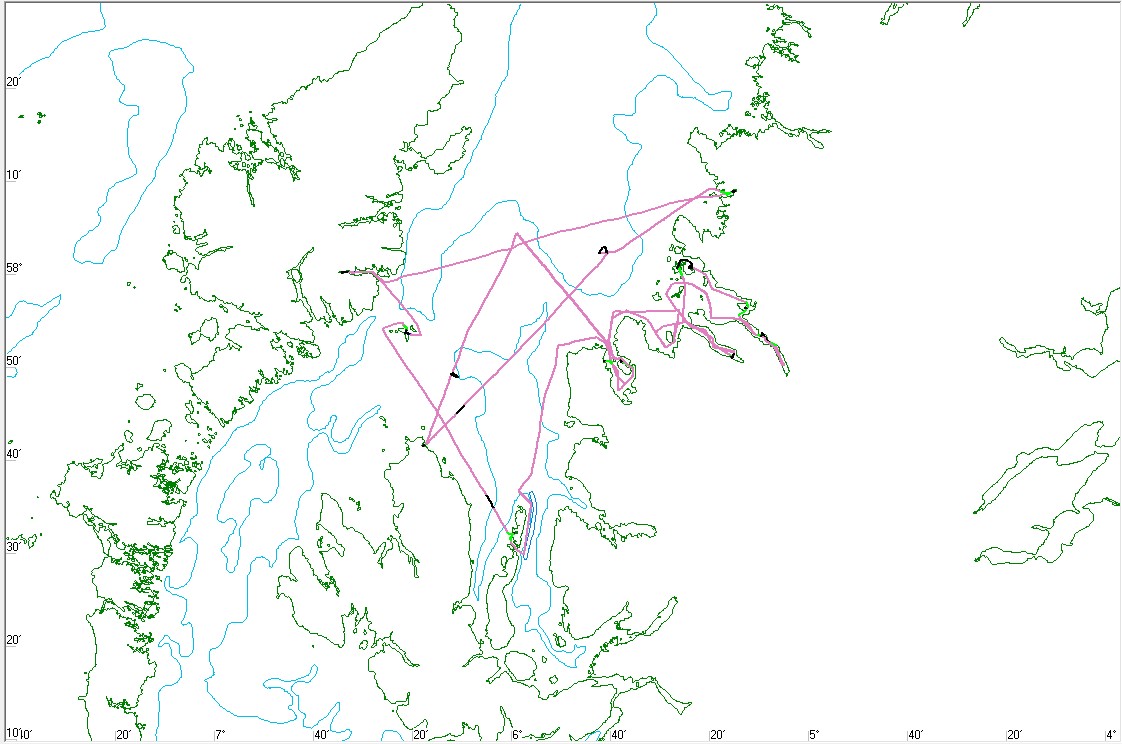Survey Summary: Joint Warrior
Military vessels engage in training exercises during Joint Warrior operations in the Hebrides
Joint Warrior is a twice-yearly, at-sea NATO military operation, carried out over two weeks in the Spring and Autumn off the west coast of Scotland. To coindice with the Joint Warrior exercises, monitoring surveys on board Silurian are scheduled each field season, during which the crew and our dedicated team of volunteer citizen scientists collect visual and acoustic data.
Our citizen scientists make visual observations from Silurian's mast
Military sonar, used during the exercises emits intense loud noise that can disturb and harm whales and dolphins which rely on their sensitive hearing to navigate, find food and communicate. We believe it is important to monitor cetacean presence and behaviour during these exercises. Unusual behaviour has been documented historically and we are committed to better understanding the impact these activities may have on cetaceans.
Between the 1st and the 12th of October, Silurian was on survey; training and deploying her citizen scientists to collect data in the area where the operations were focused. During the 12-day expedition survey, a total of 356 nm travelled, despite some adverse weather conditions.
Map detailing the survey track lines covered during the monitoring expedition
During the expedition survey, 5 different marine mammal species were recorded, including: common dolphin, harbour porpoise, minke whale, common and grey seals. 54 encounters yielded a total count of 181 individuals, recorded through visual data collection efforts from the deck.
Common dolphins ride the pressure wave at Silurian's bow, providing a fantastic close-up for all on board
In total, sonar was recorded through the hydrophone during 30% of the total track lines conducted during the survey. A total of 32 military vessels were recorded by the citizen scientists through-out the survey, with more identified and tracked at greater distance by the staff. One notable observation was the presence of a large group of harbour porpoise swimming fast in the presence of loud sonar.
Below you can hear one of the recordings of sonar made through our hydrophone during the survey.
Throughout the expedition survey, a number of beautiful anchorages were made, providing a great opportunity to ventrure ashore and explore. These included The Shiants – a small group of isles in the middle of the Minch, Isle Martin – an uninhabited island in Loch Broom where St. Martin is reputed to have established a monastery and Tanera Beag – one of the Summer Isles.
On of our team looks on at Silurian while she's on anchorage
We would like to take the opportunity to say a massive ‘thank you’ to the citizen scientists who joined us aboard and made the expedition survey possible: Robin, Karen, Hanna, Jan, Rod and Fiona. Without your enthusiasm, dedication and contribution, we couldn’t have undertaken this vital monitoring survey.
“It’s a great way to make a personal contribution to conservation and to learn more about the bigger picture”
Thanks also to Scottish Natural Heritage who help fund the data collection programme aboard Silurian.





